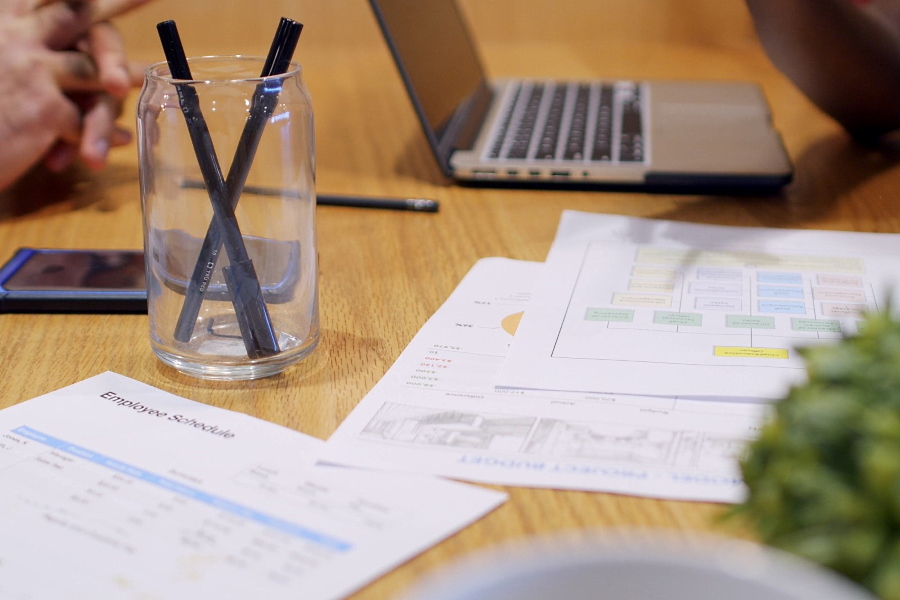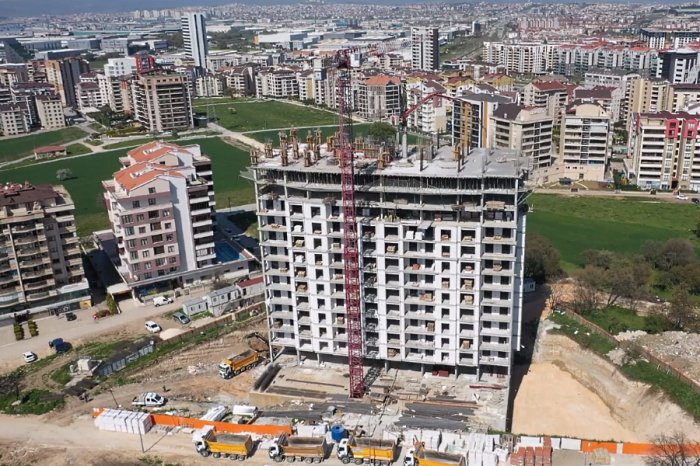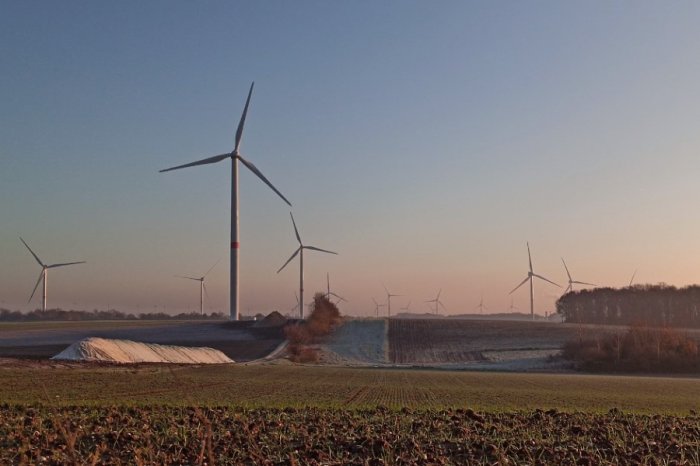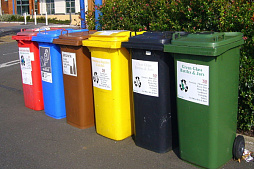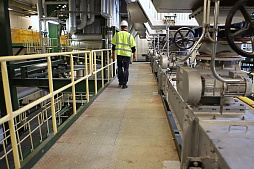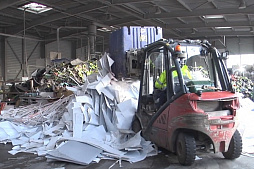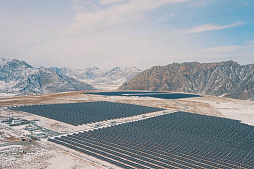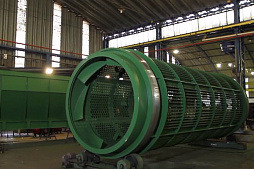Financing the construction of waste processing plants and loans for modernization
Costex Corporation DBA offers:
• Investment financing from $ /€ 5 million or equivalent and more
• Minimizing the contribution of the project promoter
• Investment loan term up to 20 years
• Credit guarantees
An analysis of the situation in the world allows us to conclude that environmental projects of this kind will have a real boom in the future.
After the end of World War II, living standards for people in Europe and most parts of the world began to rise along with population growth.
The industrial revolution, the introduction of new technologies and the rapid growth of consumption are accompanied by an increase in the amount of waste that requires proper disposal.
Manufacturers and sellers of goods, using highly effective marketing tools, stimulate the acceleration of goods turnover, offer more and more sophisticated consumer goods and packaging. All this aggravates the problem of accumulation of industrial and household waste. Every inhabitant of the planet today throws out 2 times more municipal solid waste than 40 years ago.
Market trends lead to a reduction in the life cycle of goods that cannot be repaired and are created with an eye to their rapid obsolescence and replacement. In the past, the problem of waste accumulation has been addressed through primitive and environmentally hazardous technologies such as incineration.
The first large waste incinerator was built in 1874 in England in order to efficiently use the thermal energy generated from waste incineration.
The experience was so successful that in 1914 more than 200 such furnaces operated in the country, 65 of which were equipped with steam generators.
Later, European engineers demonstrated a number of unique solutions, such as the environmentally friendly Spittelau waste incineration plant, built in 1989 in Vienna. Reconstructed under the supervision of the eminent architect Friedensreich Hundertwasser, this facility has grown from an ordinary plant to a world famous tourist attraction.
Now the Austrian capital is considered one of the cleanest metropolitan areas in Europe, despite the intensive incineration of waste (Austrian waste incineration technology is highly valued all over the world and is being implemented in many countries).
The next step towards smart waste management was the introduction of waste sorting to recover valuable materials, proposed by American entrepreneurs in 1898. Waste began to be sorted, collected in separate containers and disassembled for the purpose of further resale and use of metals and other useful components. Currently, sorting is considered the most important stage in almost any technology for the processing of household and industrial waste.
Rapid environmental pollution has worried experts for many decades, but it was not until the end of the 20th century that the issue of waste processing began to be seriously seen as a promising business opportunity.
Along with the realization of this opportunity, the first major investments were made in the construction of waste recycling plants and WtE facilities for the generation of clean energy.
According to the World Bank, approximately 2 billion tons of municipal solid waste is generated annually in the world, one third of which is not properly recycled and stored. Forecasts indicate that by 2050 this figure will increase to 3.4-3.6 billion tons, which is a serious environmental problem and at the same time an attractive business opportunity.
In many countries, the capacity for storing waste is rapidly diminishing. On the territory of the former USSR alone, according to various sources, there are about 100,000 illegal garbage dumps. About 8% of Ukraine's territory is littered with garbage, which is equivalent to the area of a small European state such as Denmark. A serious situation has developed in Africa or South Asia, where some municipalities no longer have free storage space for solid waste and are forced to take garbage outside the cities.
Successful experience in waste processing in Europe, South Korea, Japan and North America gives hope for overcoming the global environmental crisis. The most complete and safe disposal of organic waste, combined with the sorting and extraction of any valuable components from inorganic waste, brings the developed countries closer to solving the problem. Moreover, some countries have become importers of waste, establishing lucrative businesses in the recovery of recyclable materials and the production of green energy.
For example, Turkey and Vietnam in 2019 became the leading importers of plastic waste, purchasing 225 and 135 thousand tons of plastic from neighboring countries, respectively.
Sweden in 2016 became one of the first countries in Europe to face a shortage of solid waste, recycling over 99% of the contents of local municipal landfills.
Since then, the Scandinavian country has been importing waste from its neighbors, using this cheap fuel to generate green energy in incinerators.
The problem of financing the construction of waste processing plants today is not the only obstacle to saving the environment.
Hundreds of obsolete and worn-out facilities built at the end of the 20th century require costly modernization or expansion in order to increase their capacity. For this reason, long-term bank loans for the modernization of waste recycling plants are increasingly being considered by European and American banks.
In general, waste processing is one of the most successful industries in the modern world. Financing the construction and modernization of waste processing plants, without exaggeration, plays a key role in the survival of humanity and building an environmentally friendly future. It also offers new opportunities for economic growth in the face of limited natural resources and the increasing energy needs of industries and local communities.
Costex Corporation DBA is ready to assist you in the implementation of environmental projects anywhere in the world, offering flexible financial models, project finance schemes and long-term bank loans.
Contact our team to find out more.
Project finance for the construction of waste processing plants
The project-based approach is popular in the planning of capital-intensive environmental projects such as waste processing plants and incinerators.This approach has led to the development of a number of promising related areas, such as project analysis, investment project management and project finance.
The project approach is especially useful in managing investments in oil and gas production, building and modernizing expensive infrastructure, and managing innovative projects of various types. This makes it possible to more effectively solve the assigned tasks, as well as improve the quality of implemented projects and save significant financial resources of project companies.
Project finance has been actively developing since the second half of the 20th century thanks to the internationalization of the global financial market and the gradual transfer of responsibility for utilities from state shoulders to private capital.
Today it is a flexible financial instrument that allows governments and private companies to raise significant funds for the construction of new waste processing plants against future financial flows.
Types of investment projects and requirements for them
The project approach implies a comprehensive approach to an investment project, including a set of actions (services, decisions and operations) that are aimed at achieving the goals of the participants using the attracted financial resources.Each investment project is characterized by such parameters as the goal of implementation, cost and budget, as well as the life cycle of the project.
A well-defined goal largely determines the length of the life cycle, the cost of the project and its overall effectiveness.
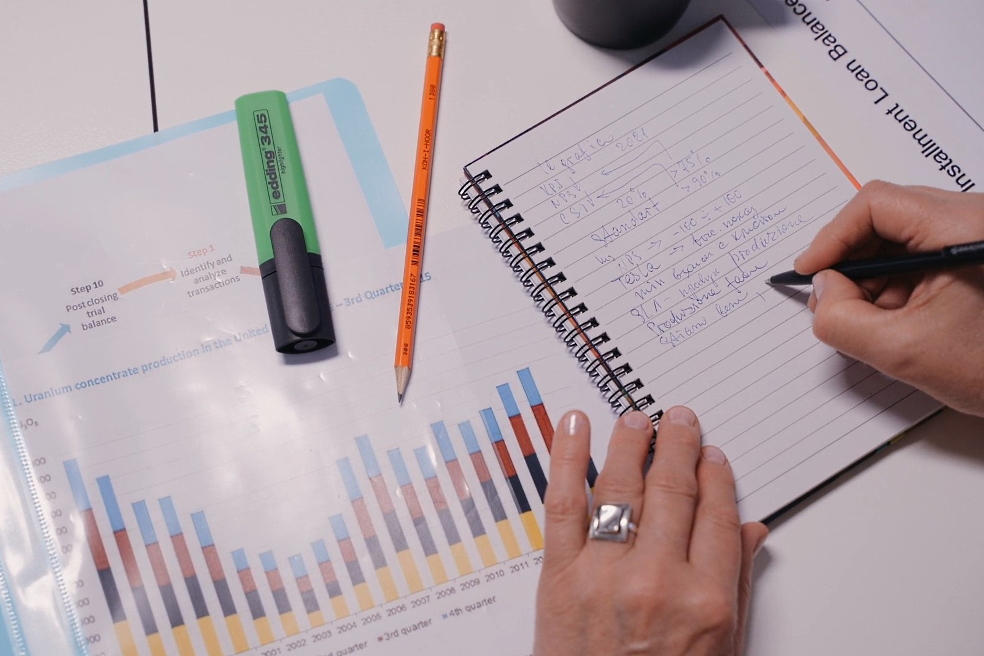
Since the cost of an incinerator is on average US $ 1,000 per tpa, the construction of a facility with a capacity of 50,000 tpa may require an investment of about $ 50 million. We are talking about colossal financial resources and serious requirements for the project.
The point of completion of any investment project is the achievement of the goal or recognition of the impossibility of achieving it. The most important criteria for projects are budget and actual cost. The budget is the planned amount of investment, which was approved by the parties for the implementation of the project. The actual cost most often differs from this theoretical indicator, and it can exceed this figure or be lower. Within the framework of project finance, companies provide additional investment resources in case of exceeding the planned budget.
The life cycle of an investment project of a waste processing plant or incinerator is a time period from the business idea to the closure of the project.
This cycle includes the following stages:
• Pre-investment stage. The initiating companies carry out comprehensive project studies that help determine the amount of funding required, the general characteristics and requirements for the project, and its time frame.
• Investment stage. This stage includes obtaining official permits and licenses, development of financial and technical documentation, search and conclusion of contracts with partners, construction, control, certification and commissioning.
• Operational stage. Starting after the commissioning of the plant, this stage covers all stages of the actual operation of the facility, from reaching the design capacity and ending with the maintenance of operability, repair and modernization of components.
• Closing the project. At the final stage, the waste processing plant (incinerator) is decommissioned according to a pre-developed plan, which may be accompanied by land clearing and costly environmental measures.
Investment projects can be classified by cost, production capacity, area of implementation and other criteria.
Particularly difficult are large environmental projects that require the participation of several companies and the attraction of colossal financial resources, usually provided through share placement and / or syndicated bank loans.
When financing large-scale investment projects, the use of a conventional bank investment loan is often not enough. So-called megaprojects often require the use of complex project finance instruments that allow participants to minimize financial and other project risks. Such projects require a special approach, which includes complex investment resources of strategic investors (targeted funding from state budgets), investments of large transnational companies, as well as majority investors (private investors who own securities issued for the implementation of the project).
An example of such a megaproject is the planned waste-to-energy plant to be built in Dubai.
The giant energy complex, capable of processing 1.9 million tons of municipal solid waste annually, will cost AED 4 billion, or about US $ 1 billion.
The project is financed on the basis of agreements with the largest financial structures from Japan, France, Germany and other countries according to the PF model.
General characteristics of project finance instruments
Project finance for the construction of waste processing plants is appropriate only for large projects, since the fixed costs of organizing a contract base and conducting research are quite high.On the other hand, a reliable and flexible PF mechanism in the context of globalization ensures the attraction of large financial resources of national and foreign banks, large non-bank financial institutions, investment funds, government agencies, as well as non-financial companies and private investors who are interested in implementing an environmental project.
Project finance is the financing of large-scale projects for the development or modernization of infrastructure, industry, energy, innovation programs and specific financial projects. As a result, the funds used to finance the construction are returned in the form of the plant's cash flows.
Financial experts distinguish three types of financing, such as bank financing, corporate financing and financing of investment projects with the participation of the government.
Bank project financing (when one or more banks issue loans for the implementation of a project) is divided into the following broad categories:
• Non recourse financing, which completely excludes recourse claims for the return of funds to companies involved in the construction of a waste recycling plant or incinerator. This type of financing is a safe option for project initiators, since all risks are passed on to the capital providers. The borrower (SPV) does not have the assets to provide for the repayment of the borrowed funds. Interest payments and debt repayment are guaranteed by receiving cash flow and project assets. This is "clean" project finance and also the most expensive scheme.
• Full recourse financing, which usually resembles traditional bank lending. The initiator company reflects the debt in its financial statements and is fully responsible for the return of the borrowed funds. This option requires sufficient assets.
• Limited recourse financing, in which a special-purpose vehicle or initiators partially provide resources for the implementation of the project. This is the most common type of financing.
The use of PF for environmental projects is most attractive for companies that implement several capital-intensive projects at the same time and for this reason prefer off-balance sheet financing.
This mechanism allows the implementation of projects in conditions of limited recourse to the borrower without displaying the debt in the balance sheet of the initiator. In the event of an investment project failure, creditors have limited access to the initiator's assets or cash flows, usually within the limits of the company's participation in a special-purpose vehicle.
Today, PF instruments make it possible to successfully implement promising well-organized investment projects even in the event of bankruptcy of the initiating company. Projects remain viable in situations where some participants cannot provide the required resources or control the risks associated with the implementation of the project. Project finance offers highly customized and flexible schemes for distributing risks and investment costs between stakeholders, which increases the chances of a successful project completion and reaching design capacity on time.
The structures of project finance may differ depending on the specifics of the facility, the purpose of the project, as well as the contract that is the basis for financing.
But there are general principles underlying project finance:
• PF is used to finance a specific investment project through a separate legal entity (SPV / SPE), established specifically for the implementation of this project and responsible for attracting the necessary financial resources.
• In most cases, PF instruments are used for the construction of new waste processing plants, less often for the modernization or expansion of existing facilities (usually used for debt restructuring).
• Borrowed funds are provided by capital providers (banks) for future financial flows of the project, with the share of borrowed capital usually varying from 70 to 90% of the total cost of the project. Despite the large financial leverage, the initiators of the project do not provide collateral, or the provided collateral and guarantees do not fully cover the risks of the project.
• Given the high risk of financing, capital providers expect significant returns after commissioning by investing these financial expectations in the terms of contracts. Together with the high fixed cost of preparatory work, this makes project finance instruments too expensive for small projects.
• The main guarantees for lenders are company project contracts, licenses and exclusive rights to use and develop valuable assets, as well as acquired technologies and production of competitive products (secondary raw materials or energy generated from MSW or other activities).
• The project has a limited life, which is clearly limited by the duration of the contract or license for specific types of work or the development of assets, the period of commissioning of facilities or structures, reaching the design capacity.
Project finance involves the participation of a wide range of financial institutions, companies and organizations.
This includes numerous companies and individuals directly interested in the results of the project, who promote the project, agree on various aspects of it, obtain the appropriate permits and often become the founders of the project company. Equipment suppliers and contractors play an important role and can also provide additional financial resources to make the use of their products and services more attractive.
Waste processing plants and other environmental projects usually involve government agencies or other official structures in the host country with an interest in addressing waste and sustainable development of the local economy.

Often, the construction of such facilities is impossible without a preliminary conclusion of a contract with local authorities for the supply of a guaranteed volume of solid waste for a certain period. The host government is considering issuing permits for waste treatment and other licensed activities.
Finally, the participants in the project finance scheme are capital suppliers who provide the project company with financial resources for a specified period of time and on pre-agreed terms. The success of the interaction of all these parties is ensured by the project consultants who are competent in various aspects of these activities.
Advantages of project finance for the construction of waste processing plants
So, the most important feature of project finance is the establishment of a special project company (SPV - special purpose vehicle, SPE - special purpose entity), which attracts resources for the project, implements the project and settles with the lenders and investors of the project from the cash flow generated by the project itself.The second feature of the PF is the extremely limited use of the initiator's assets to ensure the return of borrowed funds at the initial stage of the investment stage of the waste processing plant (incinerator) project.
Interest and principal payments are made thanks to the cash flows of the investment project. Thus, project finance allows companies to significantly reduce the cost of expanding their business by obtaining relatively inexpensive investment loans. It is based on the idea of servicing debt by recycling waste, selling high-value recyclables or generating energy in the future.
Project finance is always based on forecasts of future business development, depends on the efficiency of the SPV / SPE and the effective implementation of the project. The development strategy of the project and the growth prospects of the relevant business are critically important here.
Along with these features, the PF instruments are characterized by the following features:
• Comprehensive analysis of the investment project in order to determine the necessary resources.
• Optimal distribution of risks between stakeholders and their control.
• Extensive use of financial indicators that allow partners to assess the safety margin of the project.
• Transparent tender approach to the selection of suppliers and contractors.
• Complex system of contractual relations.
Unlike traditional corporate financing, when the borrower is responsible to the lender with all assets, the PF assumes the allocation of borrowed funds for future cash flows from the implementation of a specific project.
For this reason, even a debt-laden company that has launched a promising project can count on raising funds without increasing its debt burden.
The risk in this case will be evenly distributed between the borrowing company and the capital supplier. The next feature of the PF is the registration of created or acquired project assets as collateral at the investment stage of the project. The sponsor shares the high project risks associated with this method of organizing financing with investors (owners of shares and creditors of different levels). Therefore, when planning the construction or modernization of a waste recycling plant, investors evaluate mainly the profitability of the project, and not the ability of the sponsor to recover losses if the project fails.
Another advantage of project finance for environmental projects is that the PF provides many forms of funding. In addition to direct investment, it is possible to create joint ventures, issue debt securities or create banking syndicates to finance a specific project.
This makes it possible, for example, to create a new company for the implementation of the project, which will not formally have any relation to the existing companies-initiators. On the other hand, it is dangerous to resort to financing with the investor's entry into the authorized capital of a company, since in force majeure there is a risk of losing the company, which is experiencing temporary difficulties.
The main advantages of project finance for the construction of waste processing plants are listed below:
• Limited liability of the initiator of the project to the providers of capital.
• High financial leverage due to the share of borrowed funds up to 80-90% of the total project cost.
• Rational distribution of project risks in a complex system of contractual relations.
• Ability to create several legally independent companies for the implementation of several large projects.
Given the growing experience of using PF tools to implement environmental projects around the world, today there are new opportunities in this area.
Costex Corporation DBA, an international financial company, keeps its finger on the pulse of investment processes, offering its clients optimal solutions in the field of project finance and bank lending.
Contact our financial team to find out the terms of financing your investment project.
Methods for implementing environmental projects and key financial indicators
Waste recycling plant construction and WtE projects can be called an area of investment that is of great interest to private companies, government agencies and the general public.Unsurprisingly, the widespread adoption of new public-private partnership (PPP) instruments has greatly influenced the future of environmental projects around the world.
PPP uses project finance mechanisms, backed up by the financial and control capabilities of the state machine, represented by government agencies and local authorities. Waste processing is critical to the preservation of the environment and human health, which is why governments are increasingly attracting private capital to implement such projects. In addition, private companies offer effective business models and transparent management levers that minimize the negative impact of overly bureaucratic government structures on environmental projects.
Thanks to a flexible and adaptable system of raising capital, distributing risks and competencies, the public-private partnership system contributes to the achievement of the interests of all stakeholders. PPP practice has been very successfully applied for many decades in infrastructure projects, healthcare, utilities and housing projects. In all these cases, we are talking about socially significant projects with low commercial efficiency, long implementation periods and insufficient budget financing due to high capital costs at the investment stage.
A typical concession scheme involves the transfer of an asset by the state into the hands of a concessionaire, which is a special purpose vehicle (SPV).
The latter attracts investments for the implementation of the project on the basis of the transferred assets, and in the future this company receives cash flows from the activities of the facility (for example, payments for waste processing, sale of secondary raw materials and energy). In this case, the concessionaire pays the state or the municipality for the use of the facility in accordance with the concession agreement.
The terms and models of financial relations may differ depending on the specific project, the specifics of the host country and other factors. In some cases, life cycle contracts (LCC) are used, which imply the engineering design, construction and operation of a facility by SPV throughout its entire life cycle.
Choosing the most appropriate approach to financing the construction of a waste processing plant requires a careful analysis of the conditions and constraints of its implementation. The preparation of financing requires the involvement of a large number of highly qualified specialists from the field of finance, law, engineering, as well as ecologists and biologists who are responsible for developing an efficient and safe concept of the future facility. This explains the high cost of the pre-investment stage.
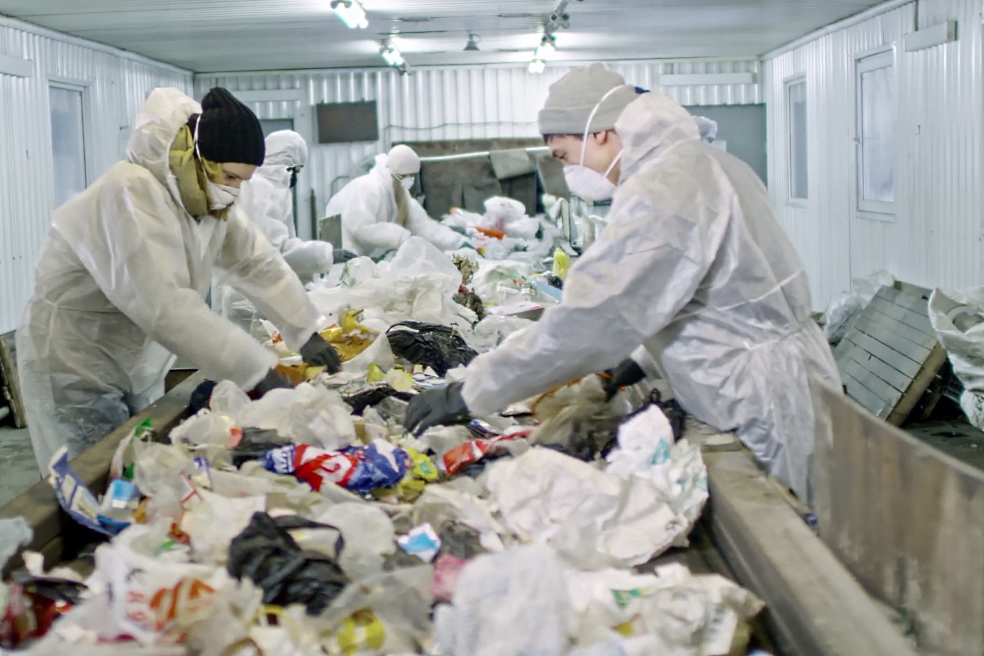
Standard methods of project analysis were developed, which allow making investment decisions based on key financial indicators with minimal risk for capital suppliers.
These indicators include the debt to equity ratio (D / E) and the debt cover ratio (DCR).
The D / E indicator indicates the share of attracted external capital in the project, which usually reaches 70-90% for the construction of waste processing plants.
Costex Corporation DBA offers to organize project finance with a minimum participation of the project initiator, which allows our clients to take advantage of high financial leverage.
In general, an increase in this indicator leads to an increase in the risk of the project and accordingly affects the cost of attracted financing. In the later stages of a project, the equity requirement may decrease. The D / E ratio plays an important role when considering bank loan applications. The debt coverage ratio indicates the ability of the special project company to service the debt arising. DCR (debt coverage ratio), calculated over a certain period of time, shows the ratio of free cash flow (FCF) to the total debt payable for the corresponding period.
This ratio in the world practice of financing environmental projects usually ranges from 1.25 to 2.00. Specific requirements depend on the risk of a particular project and the solvency of a particular company. The higher the DCR, the lower the risk of non-payment of debt by a potential borrower.
This requirement of banks may vary depending on the stage of the project and the overall level of risk.
If you are looking for professional advice in the field of project finance, please contact our representatives. LBFL, together with respected international partners, offers the implementation of investment projects around the world, uses extensive knowledge and experience for the prosperity of our clients. We are ready to help you at any stage of the project by providing long-term financing, refinancing loans, consulting services or other assistance.
Bank loans for the construction and modernization of waste processing plants
The construction of new facilities for recycling waste and generating green energy requires a multimillion-dollar investment, which is often characterized by low ROI and a long payback period.For this reason, the selection of an adequate source of financing for environmental projects plays an important role in achieving sustainable development goals.
LBFL experience shows that each of our clients has unique financial needs. We understand this perfectly, constantly improving our package of financial services and providing new tools for the implementation of capital-intensive projects. Our partners can count on both comprehensive support for investment activities and significant borrowed funds that allow for large investments in the construction of resource-intensive facilities.
The loans offered to companies are also extensive in terms of affordable repayment terms and support offered by both financial institutions and government agencies.
As a result, business development can be much more efficient, and the path to obtaining an investment loan with our participation can be relatively short and simple.
However, some companies recklessly rely on internal resources, considering them the most affordable and cheapest. We offer you to understand the intricacies of the choice of funding sources, the advantages and disadvantages of a bank loan for environmental projects.
Equity capital versus debt capital
Companies involved in the processing of solid waste and other types of waste need a constant inflow of capital from various sources.All funds used for the implementation of investment projects can be conditionally divided into equity and debt capital. Sources of equity capital can be, for example, withholding part of the company's profits, as well as funds from the issue and placement of shares. In turn, the borrowed capital is formed exclusively through loans, issuance of debt securities and financial leasing.
Selection criteria and separation of sources of capital attraction depends on the specific investment project and the requirements of its participants:
• Business forms and size of the business: the choice of available funding sources increases with the size of the business, as it is much easier for a large company to borrow money than for an SME or microenterprise.
• Degree of development: each company has different needs at the stage of formation and early development, growth or maturity and decline.
• Costs of attracting financing: the efforts of each company are aimed at minimizing the operating costs of the project.
• Flexibility of the given source of financing: this actually means the speed of obtaining and the amount of available funds, the time of debt repayment, the possibility of negotiations to reduce the required amount, the possibility of revising the loan repayment date.
• Optimal capital structure and cost: striving to optimize the capital structure for maximum financial benefit, which boils down to a choice between increasing the share of equity capital and increasing debt.
• Financial independence of the company and minimization of project risks.
In the initial period of work, companies most often finance new projects by mobilizing internal resources and previously earned profits.
However, the construction of large waste processing plants, the cost of which is estimated at tens of millions of dollars, usually requires external financing in the form of syndicated loans and the like.
Table: Comparative characteristics of equity and debt capital.
| Equity capital | Borrowed capital | |
| Internal sources | Contributions from the owners of the company, partners and shareholders, retained earnings and depreciation. | None |
| External sources | Issue and placement of new shares of the enterprise. | Loans from individuals, bank investment loans, loans from the non-banking sector, subsidies from EU funds, issuance of debt securities and financial leasing instruments. |
The effectiveness of using a particular source of funding is determined by experts when building a financial model for a specific business project.
This model serves as a basis for making decisions with minimal risk.
If you are looking for professional financial modeling services, please contact us.
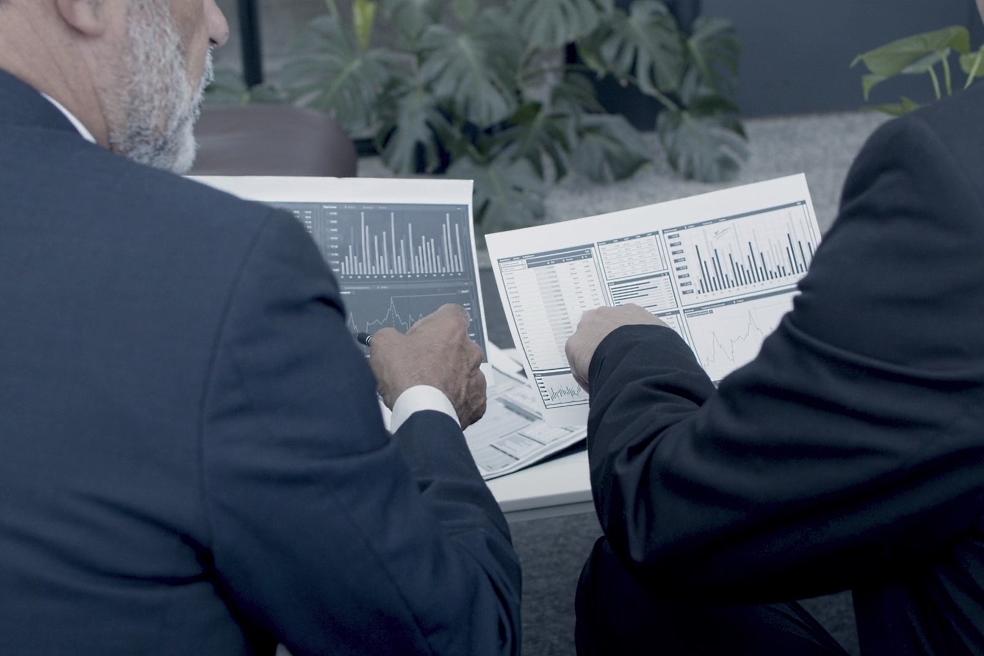
Advantages and disadvantages of an investment loan
An investment loan is a long-term loan provided by a bank or other financial institution to finance the construction / purchase of new and / or modernization of existing assets owned by the company.An investment loan can also be used to purchase intangible assets.
In the context of waste recycling, this could mean the acquisition of new technologies, including WtE technologies. The received borrowed funds of the company can be used to purchase shares or purchase other long-term securities. In a word, using the funds of an investment loan, one can expand business activity and increase the company's profits on the basis of the “money makes money” principle.
The peculiarity of traditional bank financing is that any assets of the borrowing company are usually used as collateral for a loan, the assessment of the borrower's creditworthiness plays a decisive role in deciding whether to grant a loan. Since it is the initiator of the project who acts as the borrower, the debt on the project is displayed in its financial statements.
This type of loan can be provided by a bank, an institution that, by definition, uses the surplus capital of some customers to meet the financial needs of others. A condition for obtaining an investment loan is a clear vision of the new activity, which is planned to be financed with borrowed funds.
An investment loan can be used for the following purposes:
• Construction, expansion and modernization of facilities.
• Purchase of land, buildings and facilities associated with the conduct of waste treatment activities.
• Equipping new plants, development and modernization of existing facilities.
• Financial investments, including the purchase of securities or shares of companies.
• Purchase of new technologies, licenses, patents and trademarks.
• Refinancing of capital expenditures, etc.
An investment loan can be short-term, medium-term or long-term.
A bank loan usually serves as a supplement to the borrower's own funds and, together with these funds, must provide financing for the investment task.
The share of the borrower's own funds in financing the construction of a waste processing plant should be at least 10% of the total cost of the investment project. The borrower's own funds can be used to purchase a land plot, finance capital costs, supply machinery and equipment, as well as the development of technical documentation, and so on.
An investment loan, like any banking product, has many advantages and disadvantages. The acceptability of using this form of financing depends only on the individual needs of each enterprise. The advantages include the fact that after applying for a loan, the bank conducts a professional analysis of the investment project. In some cases, this allows participants to correct shortcomings at an early stage or decide that the investment is not profitable and abandon it.
It is also quite clear that a large investment loan with a long maturity can be a vital financial injection for a company, becoming a powerful driving force for its development and a competitive advantage.
This often outweighs all other considerations.
Unfortunately, an investment loan for the construction of waste processing plants for young companies is practically unavailable due to the strict requirements set by banks for potential borrowers.
In addition, the terms for consideration of the application are quite long, which also requires the filing of a large amount of documentation by the applicant. For some companies for whom interest rate risk is an important factor, floating interest rates may also prove to be a disadvantage.
If you are interested in a long-term loan for the construction or modernization of a waste processing plant (incinerator), contact our financial team.
Costex Corporation DBA provides large loans from 50 million euros with maturities up to 20 years to ensure the sustainable development of capital intensive projects around the world.



